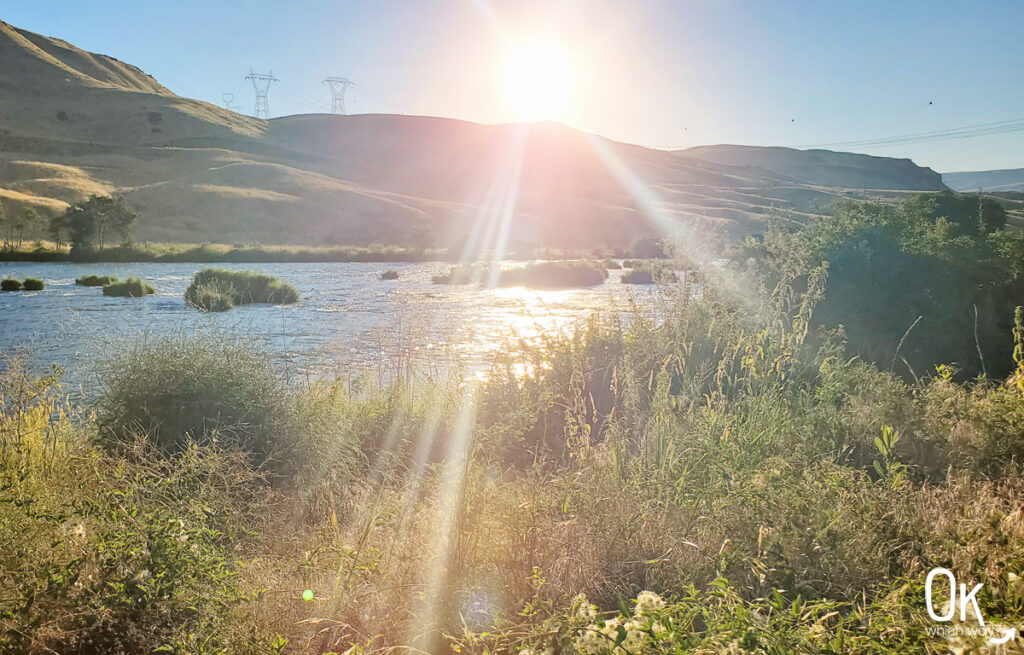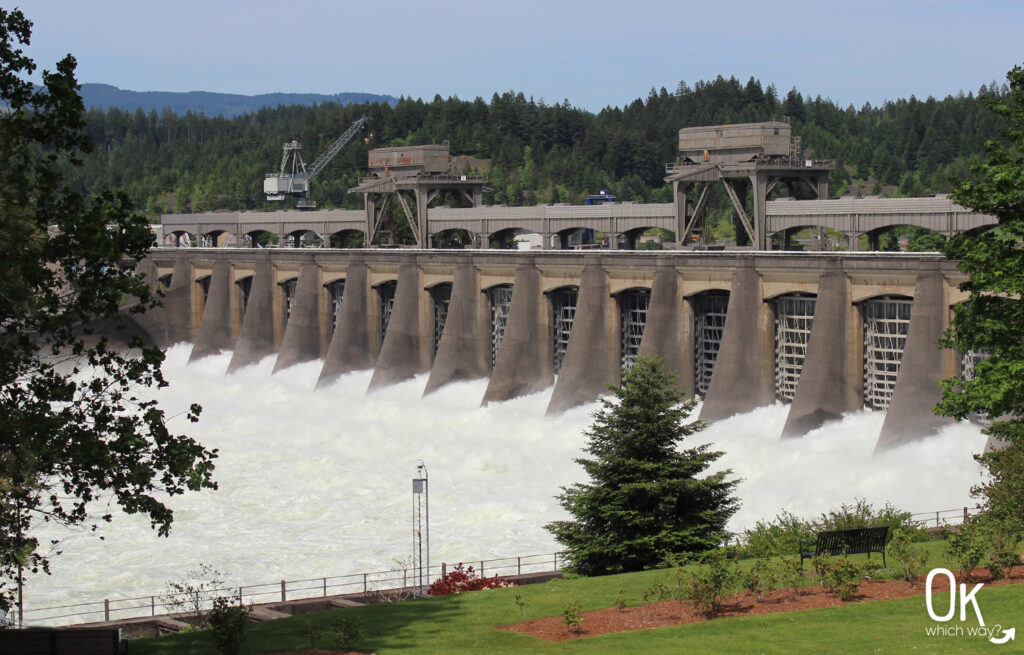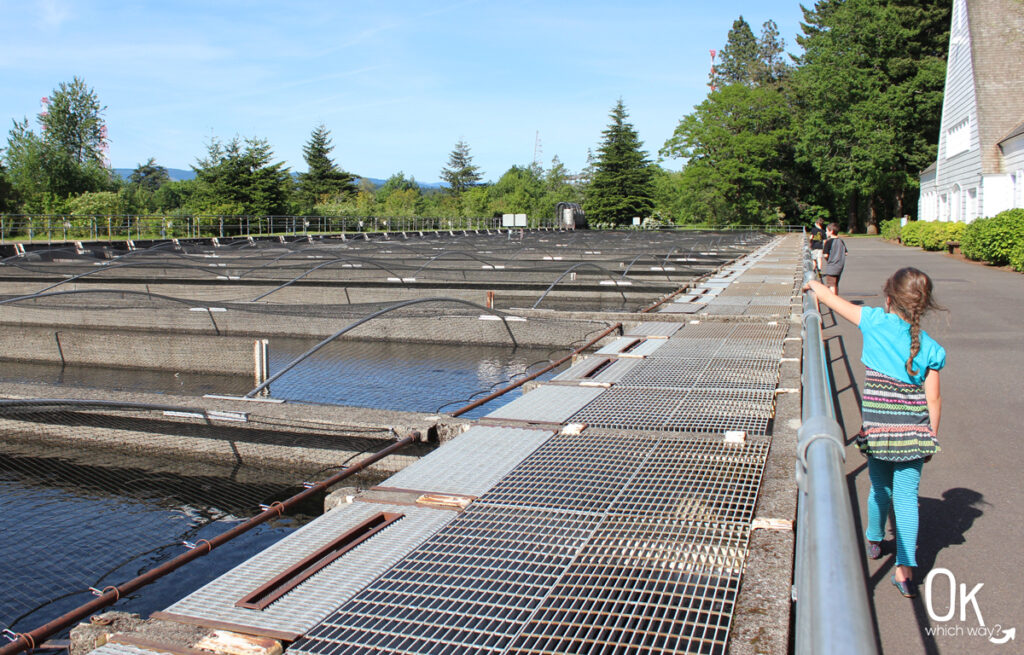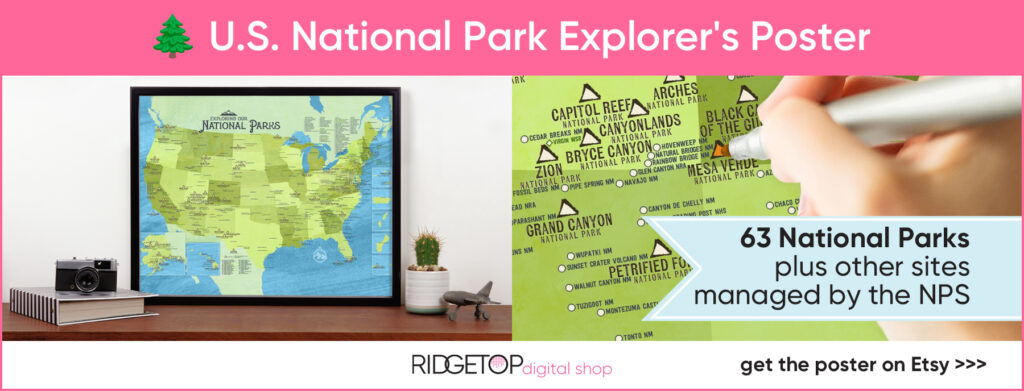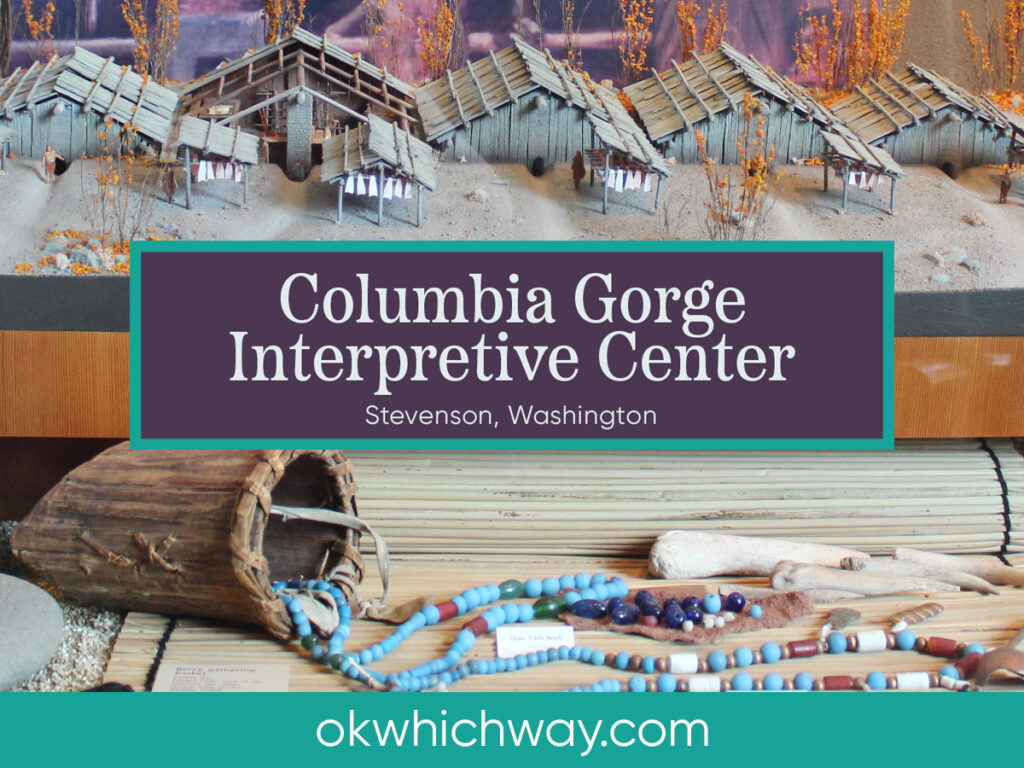
Columbia Gorge Interpretive Center
The Columbia Gorge Interpretive Center is in Washington, within the Columbia River Gorge National Scenic Area. The center tells the human and natural history of the area with a variety of exhibits. We visited the interpretive center to learn about the Native Americans from the area. But, we learned so much more – including topics on natural resources, transportation, and communities of the Columbia Gorge.
This post may contain affiliate links. When you make a purchase using one of these affiliate links, we get paid a small commission at no extra cost to you.
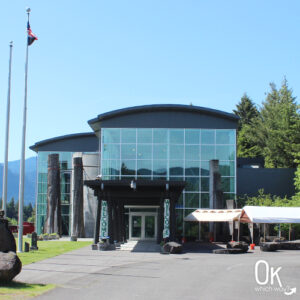
Visiting Columbia Gorge Interpretive Center
Location: Stevenson, Washington along the Columbia River
Parking: free
Entrance Fee: $10/adults; $6/ages 6-12 click here for current pricing
Hours: 9:00am – 5:00pm, closed on holidays
The Drive
The Columbia Gorge Interpretive Center sits just off WA-14, making it an easy place to visit. No matter which direction you’re coming from, the views are spectacular as you follow the gorge that separates Oregon from Washington.
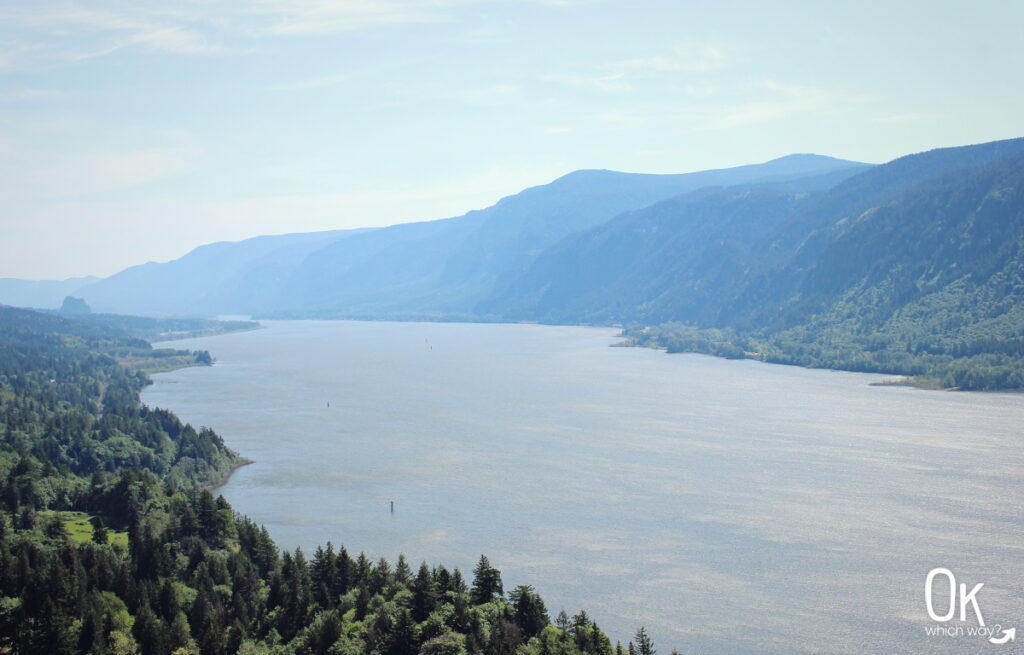
Interpretive Center Exhibits
FIRST PEOPLES – THE CASCADE CHINOOK
The tour begins with exhibits focused on the life of the Cascade Chinook tribe.
Standing tall in the middle of the exhibit is a replica of Tsagaglalal, or She Who Watches. She is probably the most recognizable petroglyph in the area. The original Tsagaglalal art is located about an hour’s drive east within Columbia Hills State Park. If you are interested in seeing her, be sure to check out their website to sign up for a tour.
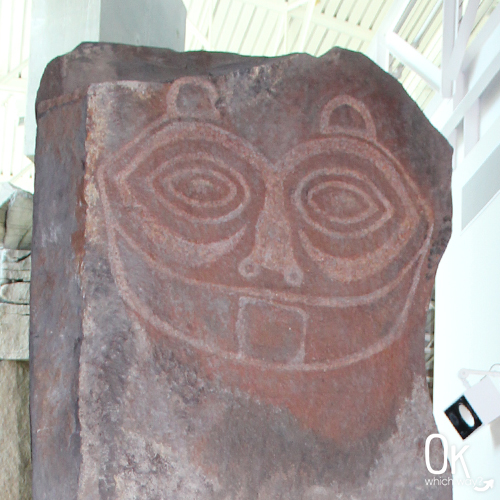
Some items on display from the Chinook tribe are a root gathering bag, child’s spoon, canoe anchor and net sinkers, and a stone used in playing games.
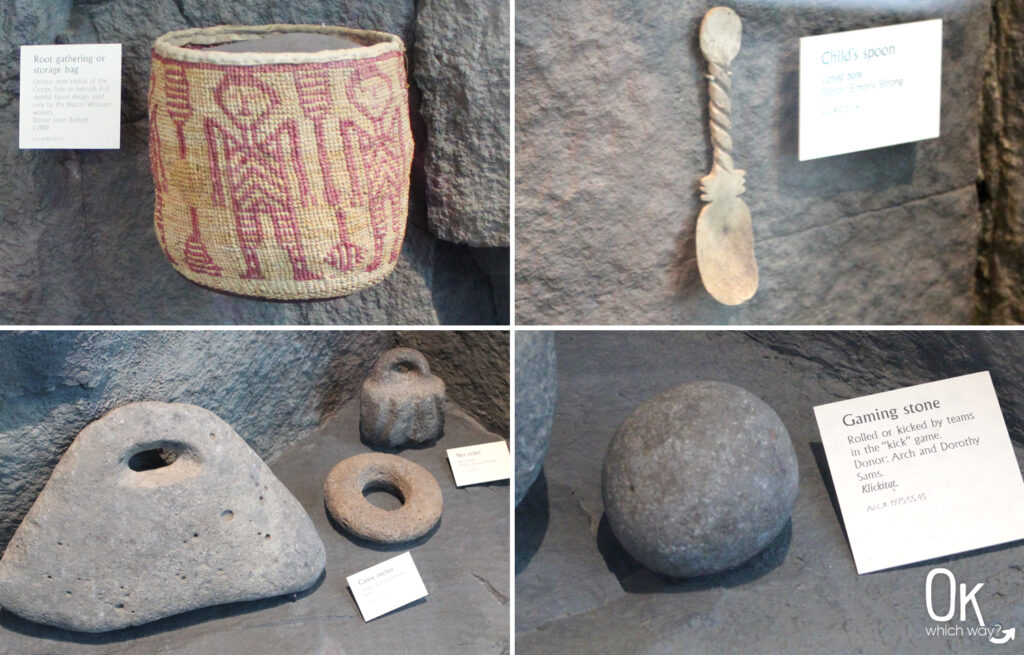
Also on display is a beautiful ceremonial dress made from buckskin with bead and shell embellishments.
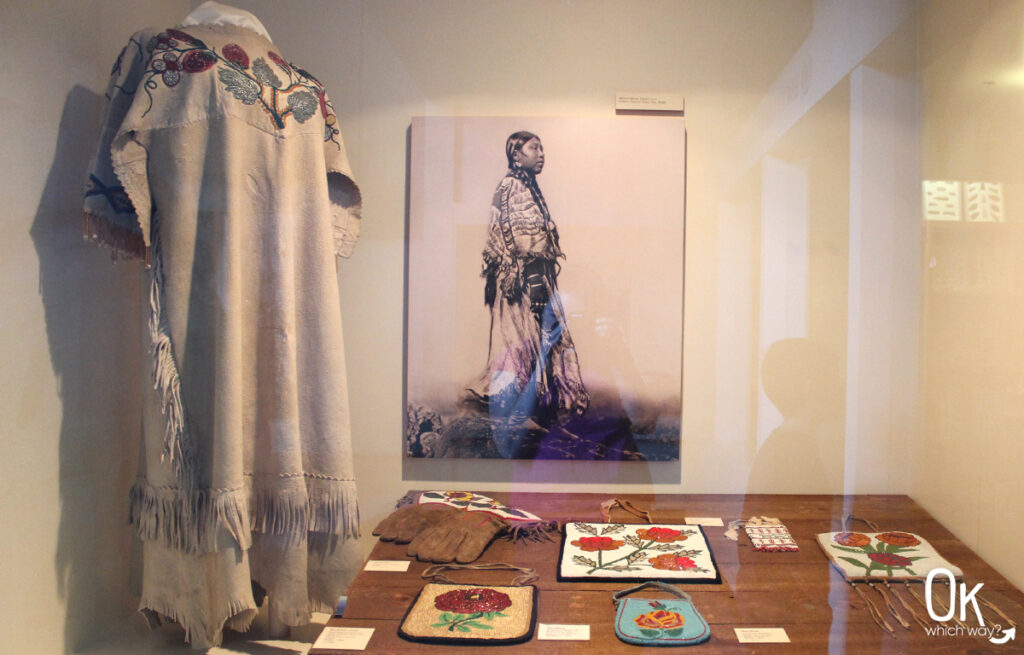
TURNING POINT & THE CORPS OF DISCOVERY
With Lewis & Clark exploring the area in the early 1800’s, change was certainly coming. A huge change occurred between 1850 and 1853 when land speculators and settlers filed claims under the Donation Land Act along the north bank of the Columbia River. This section highlights the contact between the two diverse groups.
We noticed a bronze sculpture with Native Americans and members of the Corp of Discovery. There was a small sign encouraging us to find a few items in the sculpture like a quill pen, fishing net, and blue trade beads. I love things like that. I guarantee my kids would have took a quick glance at the sculpture and moved on. Instead, they examined the sculpture searching for the items.
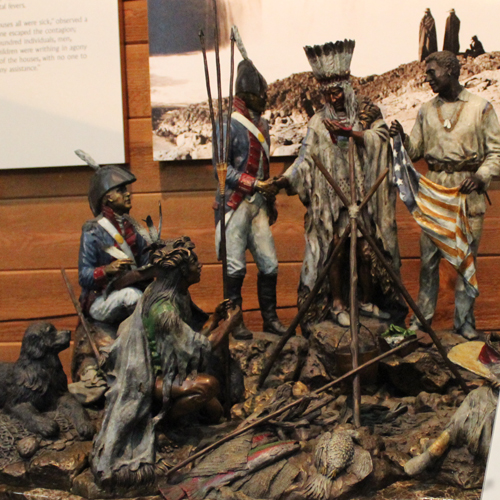
We also examined a model of the Clahclehlah village. Lewis & Clark visited this site in 1805 and 1806. It was excavated from 1977-1979 during the construction of a powerhouse at Bonneville Dam. Many artifacts were found.
Items typically traded by the people of Clahclehlah in the early 1800’s were wapato roots, salmon tails, hazelnuts, tobacco, wool blankets and dentalium shells.
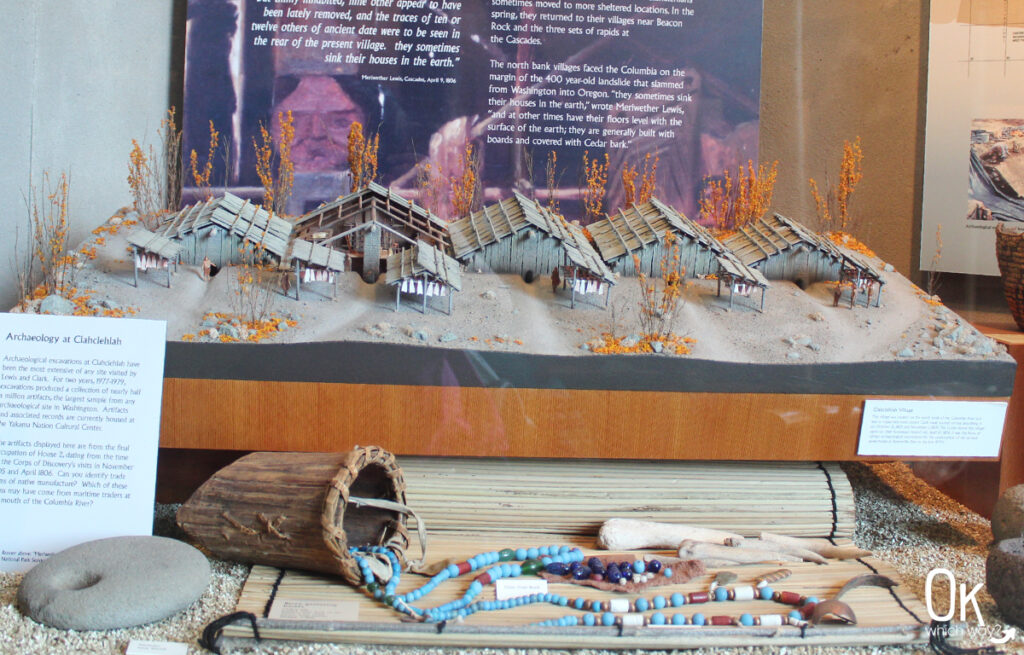
EARLY CHANGES & COMMUNITY GALLERY
This exhibit focuses on the pioneers that moved to the area and the military forts needed to protect them from Native Americans.
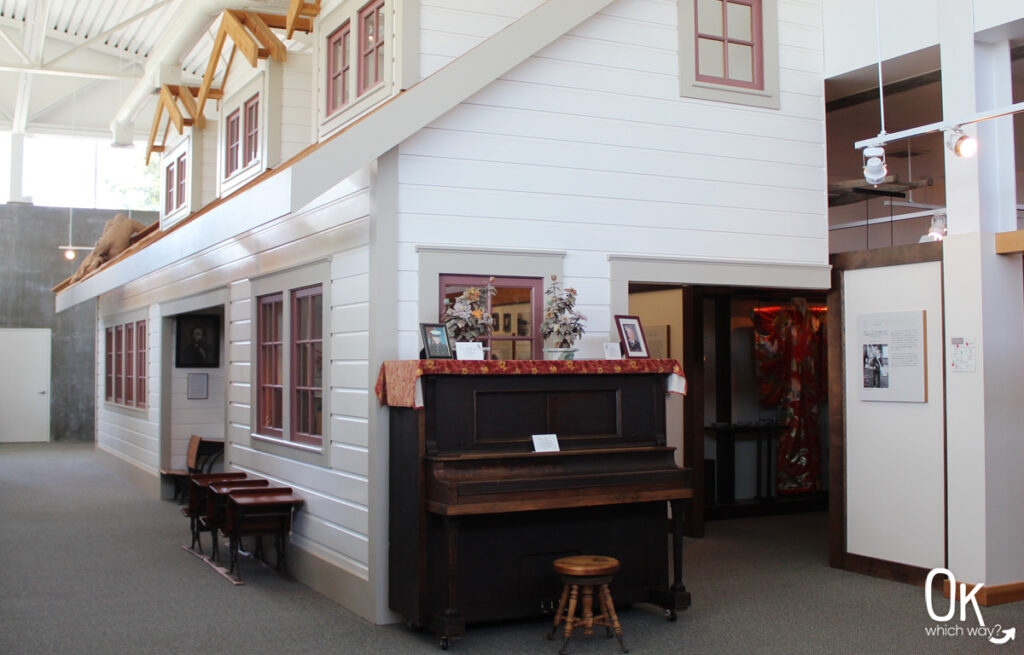
JAPANESE COLLECTION
Since Japan is right across the Pacific Ocean many Japanese immigrants came to the Pacific NW in the early 1900’s. They helped build roads, railroads, and tunnels, they planted orchards and operated ranches.
Side note: Check out my blog post on how many Japanese immigrants and their families were treated after the bombing of Pearl Harbor.
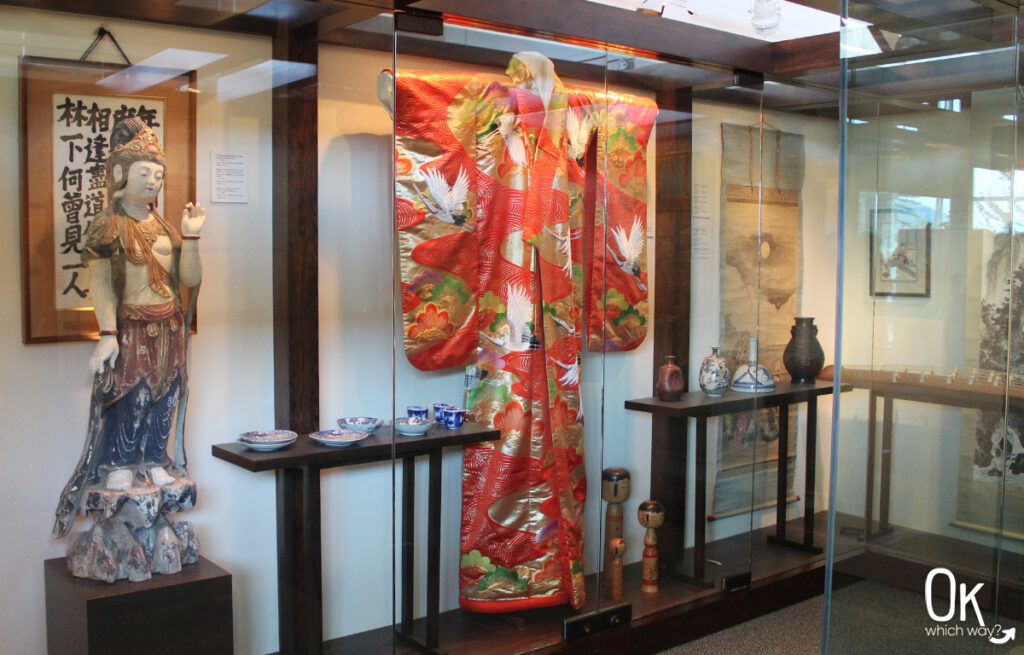
ROSARY COLLECTION
An impressive rosary collection – The Don Brown Rosary Collection displays about 4000 rosaries.
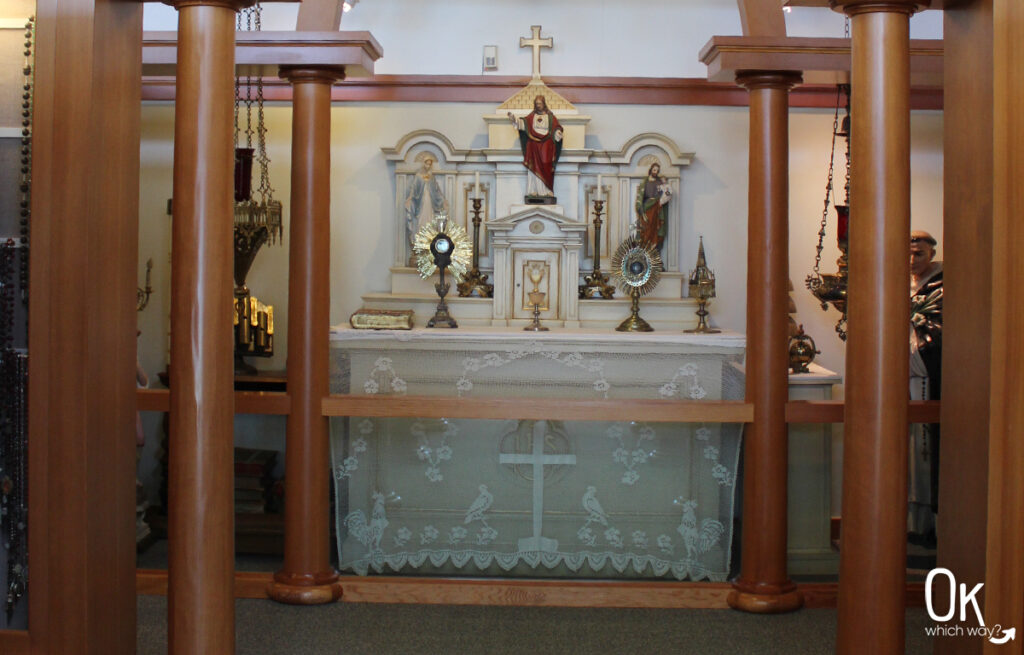
TRANSPORTATION
A small section is dedicated to sternwheelers and the SP & S (Spokane, Portland & Seattle) Railroad. The sternwheelers were put out of business once the railroad came through. I’m curious what will eventually make automobiles obsolete.
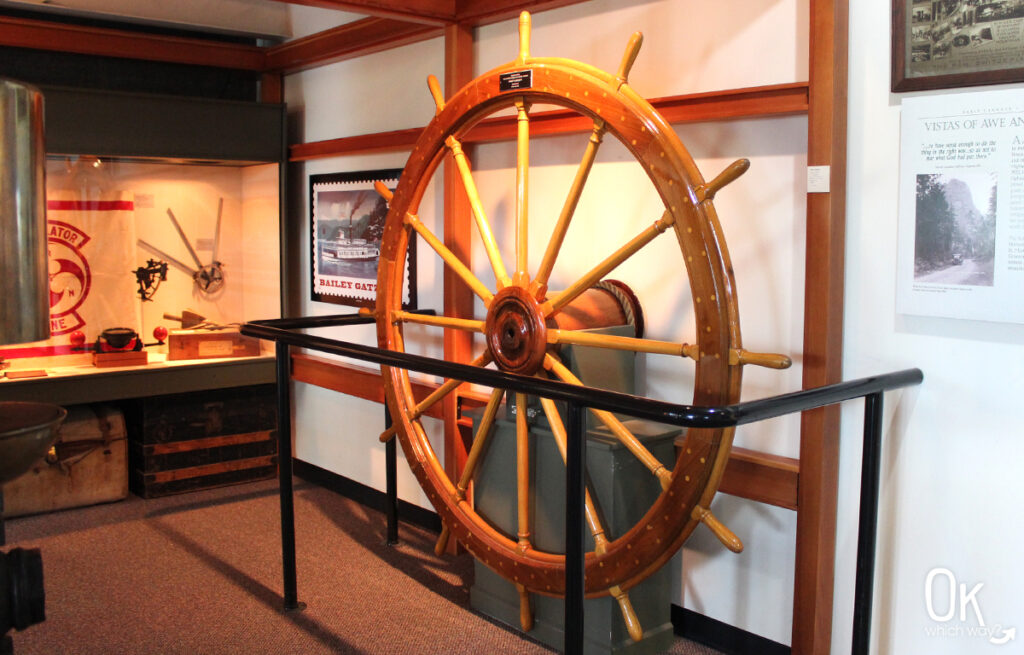
The Bailey Gatzert was a sternwheeler built in 1890. She ran up and down the Columbia River and around Puget Sound until the 1920’s.
HARVESTING RESOURCES
A large, open area showcases the timber and fishing industries.
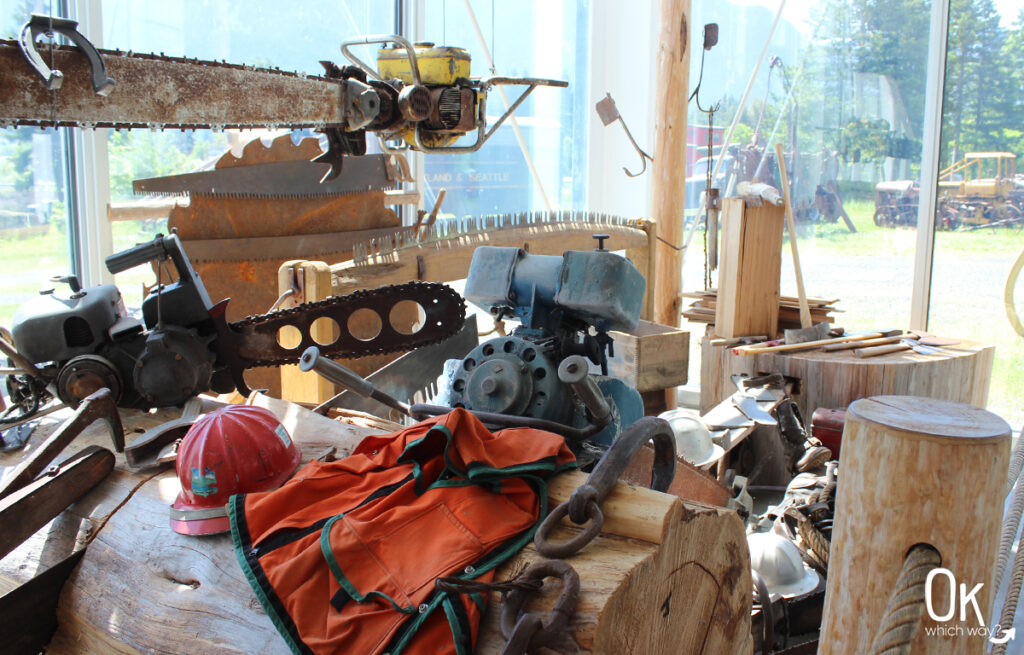
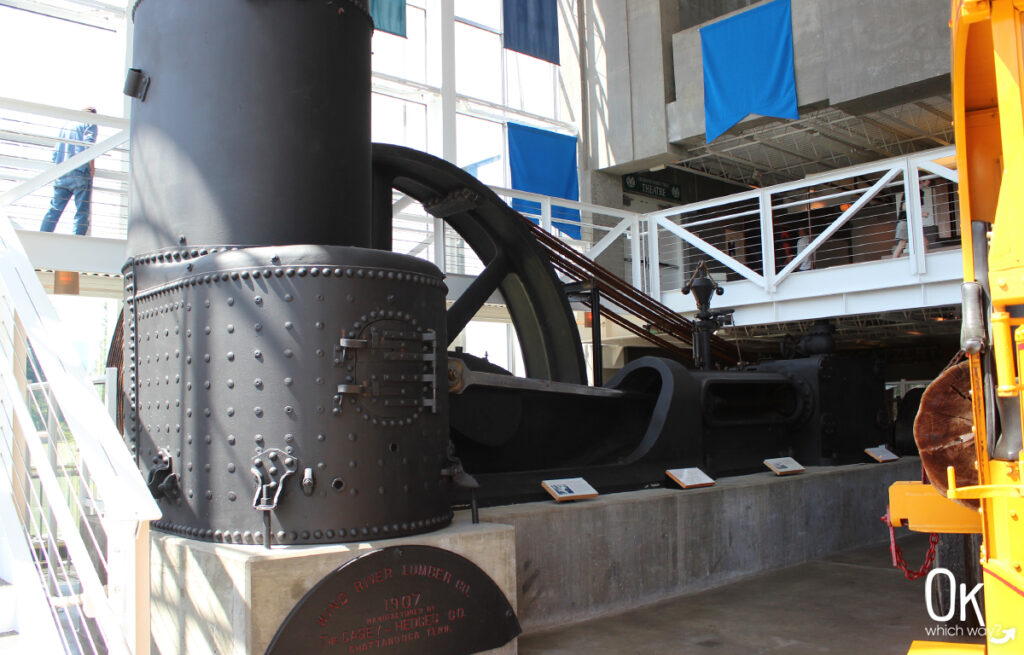
HARSH DEMANDS – BONNEVILLE DAM
It is a small section of the museum, but I found the effects of Bonneville Dam and our need for its hydro-electric power very interesting.
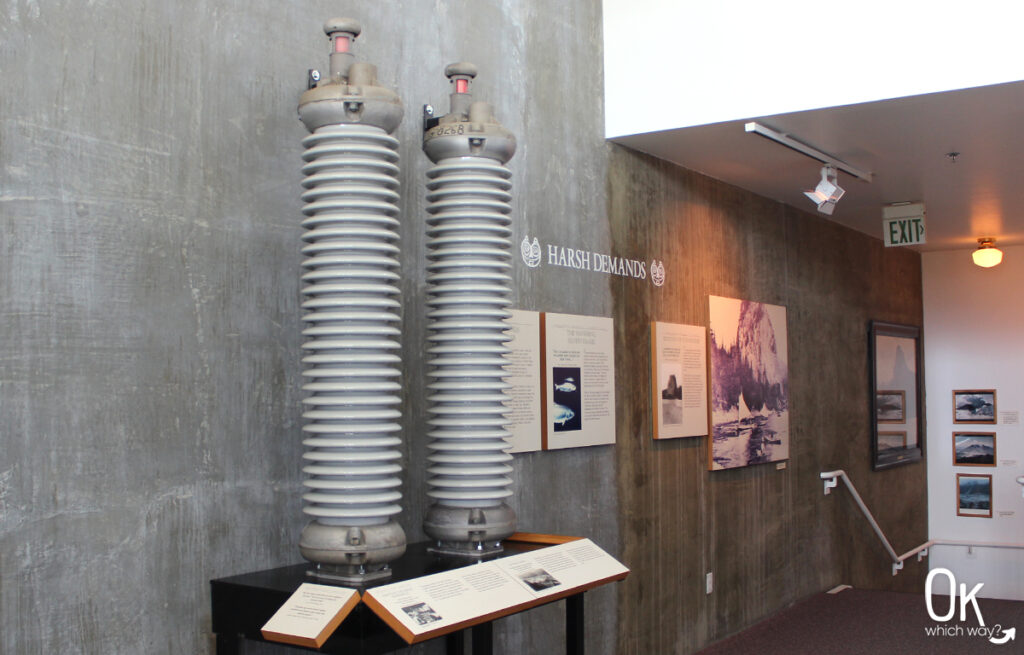
OUTDOOR EXHIBITS
Outside is a plethora of early logging and road building equipment.
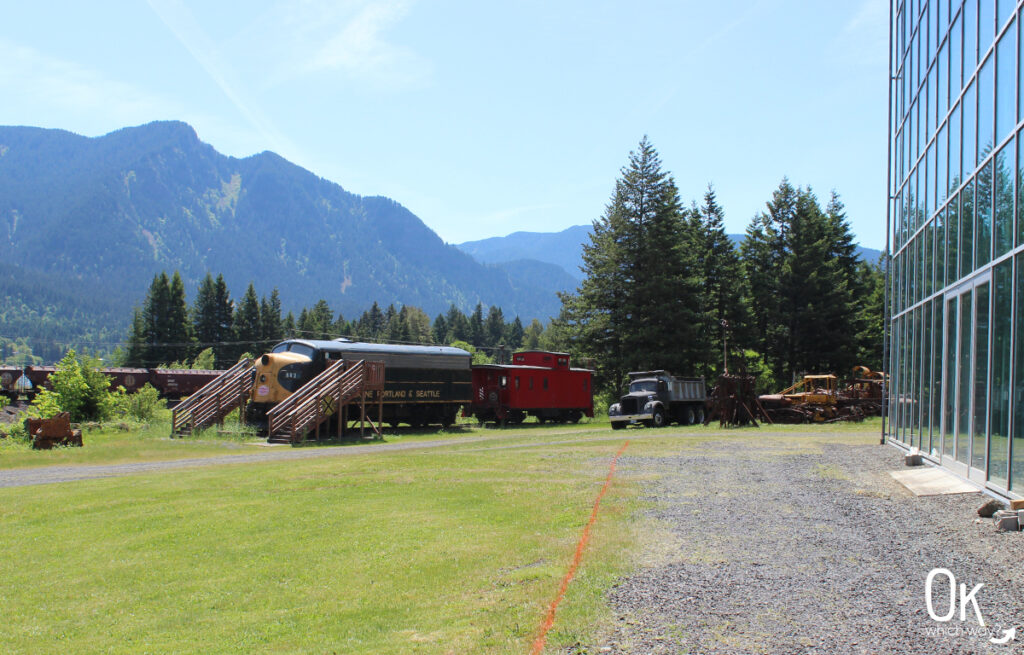
If you find historical information exciting, I do recommend this museum. It covers many topics with displays that are well done.
More Places to Visit in the Columbia Gorge

